As a coach, I am always looking for drills to do in practice to accomplish two things.
- To get as many players involved in the drill as possible.
- To minimize the amount of standing around and waiting by the players.
I want the players to be in constant motion. Any time a player is standing on the sideline or anytime nothing is happening in practice, then it is just wasted practice time. I want my practices to be energetic and intense. I want the players engaged from the moment practice starts until the practice ends.
Wasted practice time can let the players mentally check out of practice. When players check out mentally, they have to be re-engaged before anything else can happen. By keeping players in constant motion, they never have the opportunity to check out therefore there is no wasted practice time.
This drill is a constant 3 on 2 drill. It works on 3 on 2 scenarios where the 3 offensive players have an opportunity to score quickly against just 2 defenders. Each possession starts immediately after the previous possession with a 3 on 2 taking place on every trip down the floor. This gives the players a great drill to work on scoring quickly when having an advantage. This also gives the players a great chance to work on playing in a tandem defensive scenario. The players are getting both offensive and defensive work during the drill.
I want my teams to score quickly in transition when they have a man up advantage. A man up advantage is anytime the offense has at least one more player than the defense. When the offense has a man advantage, then I want the offense to attack and score quickly. A quick score prevents the defense from getting another player into the play. This drill works on attacking quickly with that man advantage.
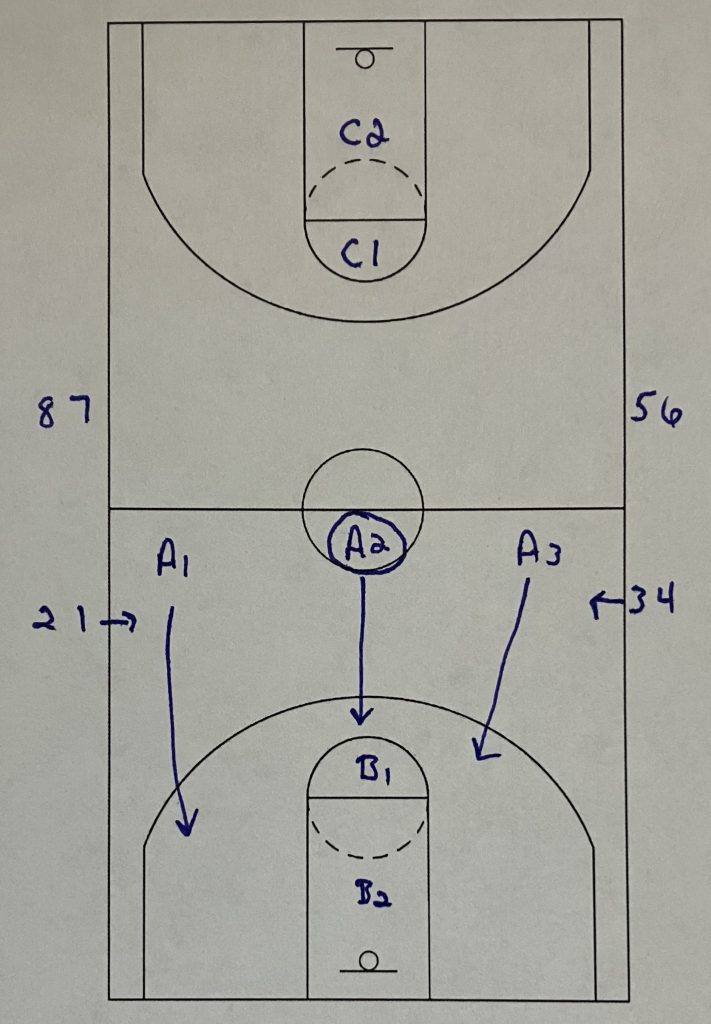
The drill starts with 3 players lined up across half-court. This is the 1st offensive team. Two players are on both ends of the court. These will be the 1st set of defenders for each end. Every other player is in one of four lines on both sides of the court just before and just after the half-court line. The first 3 offensive players, A1, A2, and A3, attack one end of the floor. In this case, the two defenders are B1 and B2. C1 and C2 are waiting on the other end.
The play will continue between team A and team B until either team A scores or team B gets the ball. This can be a turnover or a defensive rebound. As soon as team B gets the ball then the drill will continue to the other end of the court.
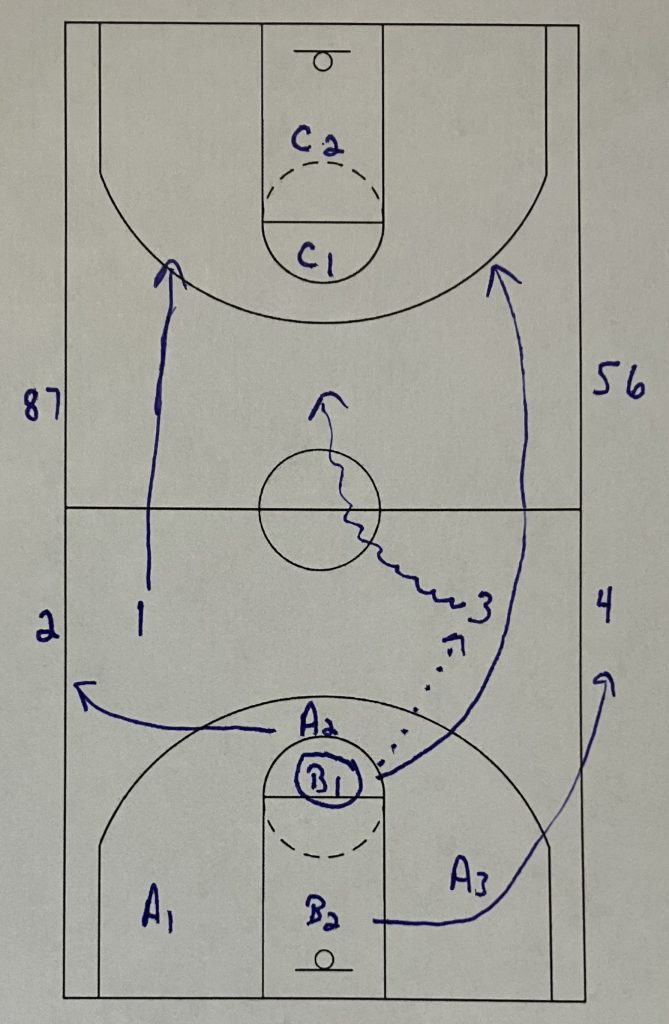
When team A gets to the half-court then the two players on either side step into the court. This is player #1 and #3. They are going to be the outlet pass players when the ball changes possession. These two players along with either B1 or B2 will be the 2nd group of 3 on offense.
Once either B1 or B2 get the ball, they are throwing the outlet pass and following their outlet pass down the court to go play offense. In the diagram, B1 has gotten possession of the ball. B1 outlet passes to #3. #3 brings the ball into the middle of the court. #1 runs down their side and B1 follows the outlet pass to become the 3rd player on offense that will play against defenders C1 and C2.
As B1 throws the outlet pass, team A and B2 will move into spots to get ready for the next possession. The defender that does not throw the outlet pass will get into one of the lines at half-court. Team A will keep two players in the court as defenders with the other player going to one of the half-court lines.
Player #1 and #3 are stepping into the drill as A2 and B2 replace them in the line. A1 and A3 are now the next two defenders in the drill.
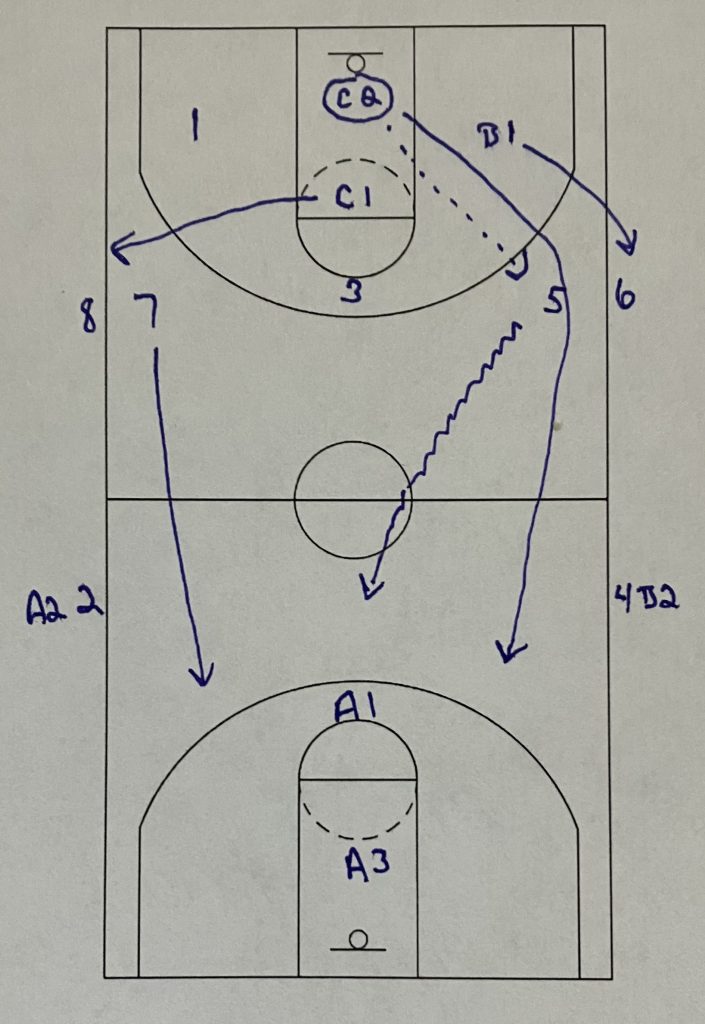
As the ball gets into the offensive zone players #5 and #7 are stepping into the court for the outlet pass. Player #1, #3 and B1 play offense. C1 and C2 play defense. C2 gains possession of the ball and outlets to player #5 to start another possession of offense. C1 and B1 replace players #5 and #7 in the lines. C2, #5 and #7 run down the floor to player offense. Players #1 and #3 stay in the court to become the new defense.
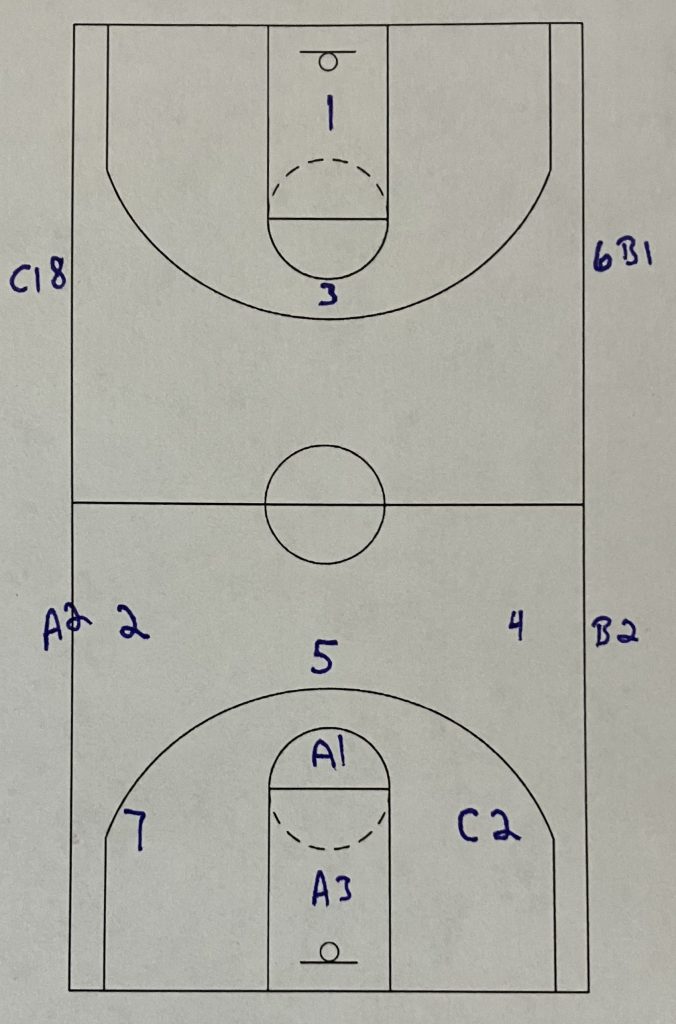
After two trips, this is how the court looks. A1 and A3 are the current defenders with players #1 and #3 on the other end waiting. C2, #5 and #7 are on offense with players #2 and #4 waiting for an outlet pass. A2 and B2 are already back in front of the lines. On the next two trips those two will be back on the court.
These diagrams have 15 players in the drill. The most any player should be out of the drill should be 4 trips of the ball. This drill keeps 15 players engage in a drill with very little down time on the sideline. The players are going to be running up and down the floor so conditioning is getting worked on as well.
Possessions should not last very long. I want the offense to score within 2 passes or less. I want the defense to force the offense into making at least 3 passes. Even though there are 8 players off the court at times, the drill will cycle quickly between possessions. When the offense is making 2 or less passes, each possession should not take more than about 5-8 seconds. This keeps the drill moving quickly.
The other good thing about this drill is it forces players to talk to each other. When the 3 offensive players lose possession then they have to communicate as to who is going to stay and which player is getting back in line. This forces players to communicate which can be difficult for a lot of players.
The players also have to communicate which line to go so there are always outlet pass players ready to keep the drill active. In my experience, players struggle to communicate on the floor at times. Drills like this one that forces players to communicate helps build that communication skill players need to be successful.
Conclusion
This is a great drill to get all the players running up and down the floor while also working on transition offense and defense. I love to use this drill early in a practice as a warm-up drill.
I like to do a drill or two right at the beginning of practice to get the players engaged quickly while also get the players moving and running. This drill does both of those things and does them well.
In a practice with a lot of players, this drill can keep everybody moving and active. Not every drill can do that. In a practice with two teams like a JV and Varsity it is also going to create matchups that are not always going to happen within a game scenario. Some JV players play well alongside the varsity and others do not. Little interactions during the drill can lead to some matchups in practice scrimmages that can influence changes.
A constant 3 on 2 drill gets everybody running up and down the court. It works on transition offense and defense. It works on communication. There is a lot of positives with this drill. If you are using it, let me know if you have any variations of it. If you are not using it, maybe give it a try and let me know what you think.


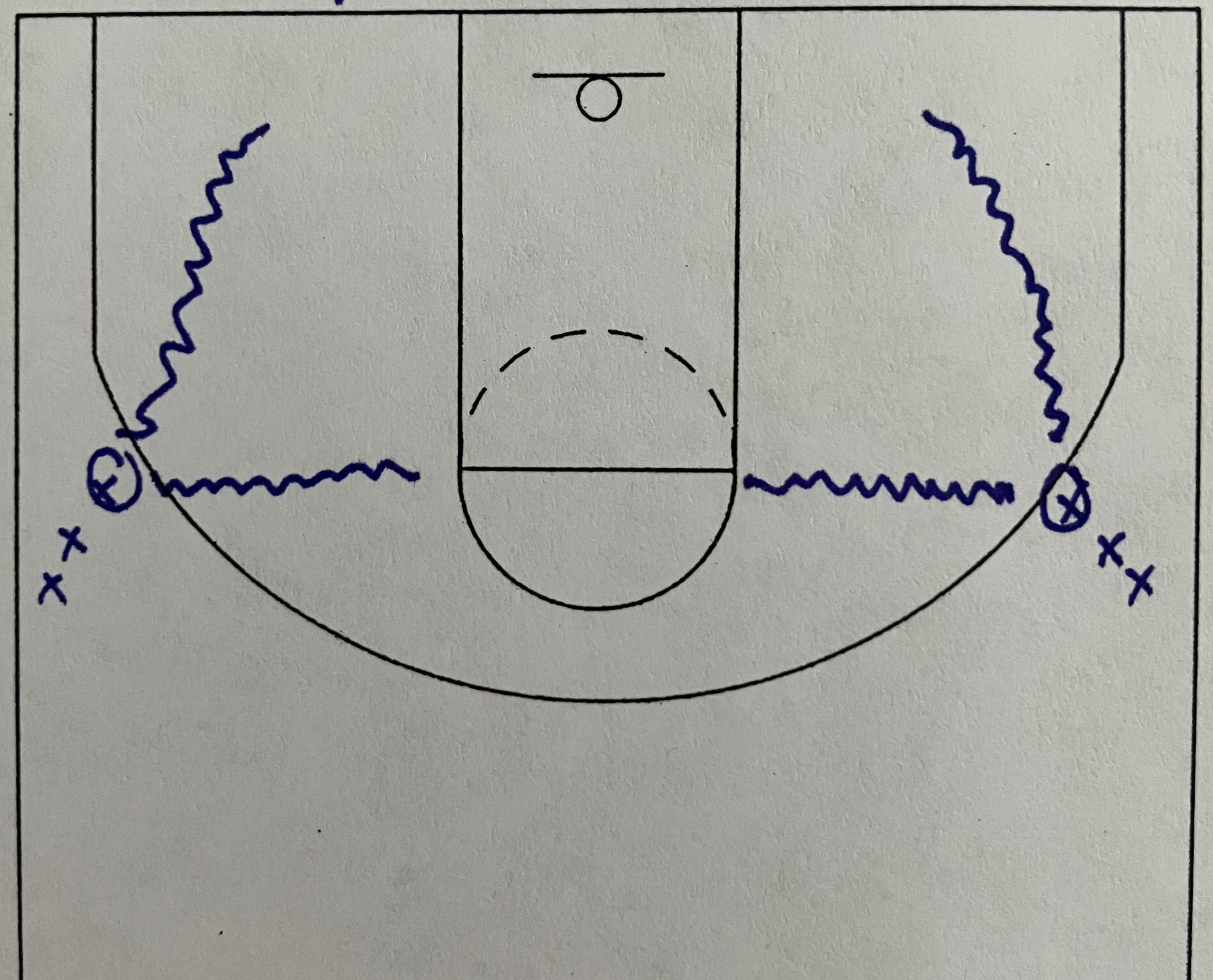
2 thoughts on “Constant 3 on 2 Drill”